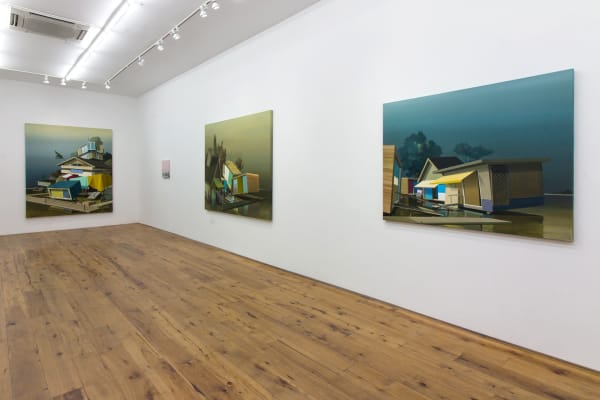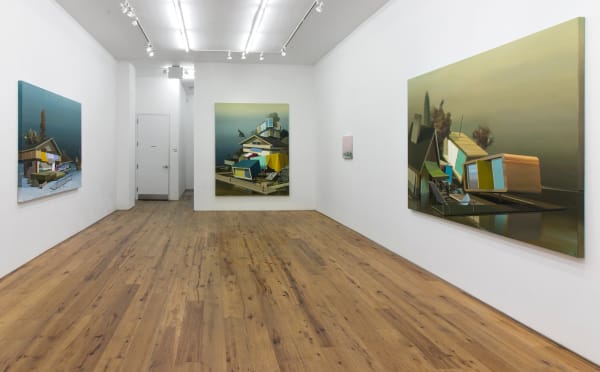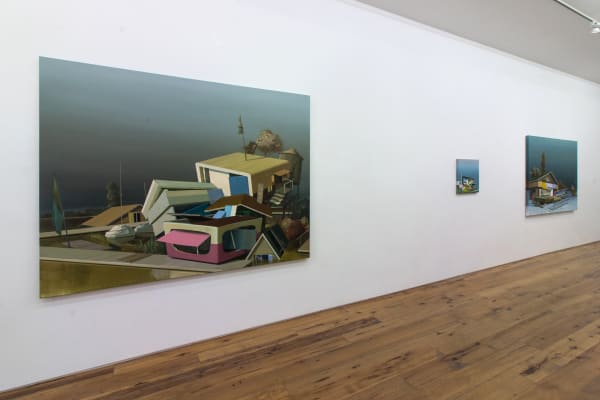Ulf Puder
The gallery is pleased to announce the third solo exhibition of new paintings by the Leipzig painter Ulf Puder.
Cezanne had his apples; Morandi, dusty ceramic vases. For Ulf Puder, urban architecture has been his motif in a career of over three decades. His enigmatic buildings, reminiscent of Bauhaus, are proprietary devices that demonstrate his uncanny balancing of scale, form and color.
Ulf Puder, born in Leipzig in 1958, belongs to the first generation of graduates from the Leipziger Hochschule für Grafik und Buchkunst (Academy of Visual Arts). With his peer, Neo Rauch, they were on the forefront of a new movement known as The Leipzig School, whose visual language is characterized by both a strong narrative quality and a mastery of the brush.
In his imaginary landscapes, devoid of humans, the relationships between the elements are both jarring and beautiful. Water might be brown or gold. Shutters of impossible sizes hang with a riot of pastel.
Art critic Jonathan Goodman once wrote that Puder’s paintings are “at the cusp between representation and abstraction, where the overall gestalt is accessible as figuration but also presents itself as a nonobjective arrangement of forms.” Put another way, Puder achieves remarkable abstractions within the confines of architectural forms, much like a poet writes verse in restricted form.
In the large seven-foot “Turmbau zu Babel”, a house seems to be on a platform surrounded by water. The main structure with a double-story loft above has appendages hanging at inconceivable angles. There is always a possibility of collapse. Every constituent part must be in balance: structures, sky, water, shapes, color and even brushstrokes.
Puder sees his paintings as reprise of historic landscape painting – continuing the tradition of 17th century Dutch Golden Age masters such as Nicolaes Molenaer, even to the extent of adopting titles from their works. His paintings document our contemporary milieu both in physical form and abstract thought. The viewer is drawn into the image and thus occupies and completes Puder’s world.
Like Caspar David Friedrich, Puder’s paintings derive from grand Romantic ideas. They are elegies of urbanization: Man’s progress depletes resources from the Earth, yet demolition and entropy reduces all structures into its elements. In this new body of works, his colors are vivid and variegated. These paintings convey optimism in a 21st century beset with global anxiety.
Ulf Puder has had numerous international solo shows and is part of major public and private collections, such as The Museum für Moderne Kunst, in Frankfurt, Germany, and Hildebrand Collection in Leipzig. Most significantly, Puder was included in After the Wall, an exhibit shown at the Moderna Museet in Stockholm (1999), the Hamburger Bahnhof in Berlin and the Museum Ludwig in Budapest (2000).







